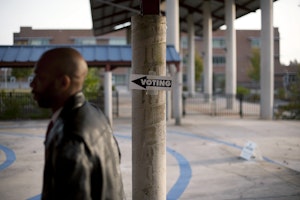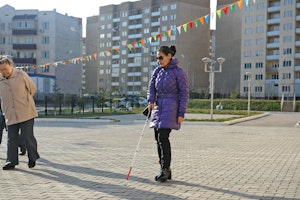The Supreme Court Rules for “We the People”
By Erica Teasley Linnick
On Monday, June 29, the U.S. Supreme Court, in Arizona State Legislature v. Arizona Independent Redistricting Commission, gave voters the right to pass initiatives to fight against partisan gerrymandering. It was a victory for the people over the politicians who are supposed to serve them.
For years, legislatures have drawn the boundaries of congressional districts to preserve incumbents and the party in power, often contorting them into bizarre shapes to accomplish this goal. The result: more political polarization, less competition, and representatives who are less responsive to their constituents. These factors combine to discourage people from engaging in electoral politics, helping to create a Congress whose members are not sufficiently accountable to the voters who sent them to Washington.
Redistricting reforms like the one enacted in Arizona seek to combat these problems. Voters there passed a measure creating an independent commission charged with drawing lines for congressional districts. With politicians removed from the redistricting process, voters have a chance to provide input on the boundaries drawn, with an eye toward electing candidates of their own choosing.
A number of Open Society Foundations grantees urged the court to find in favor of voters. The ACLU, the Brennan Center, the Campaign Legal Center, Common Cause, and Democracy 21 submitted an amicus brief in support of the Arizona Redistricting Commission and similar independent line-drawing bodies in states like California, where an independent commission, also established though the state’s initiative process, drew congressional lines for the first time in 2010.
Advocates believe the Supreme Court’s decision in the Arizona case will embolden voters in other states to follow this path. In addition to Arizona, 15 other states have undertaken similar efforts to increase civic participation and decrease the amount of influence that politicians have in the redistricting process. Illinois, Indiana, Maryland, Michigan, Minnesota, North Carolina, Ohio, and Oregon are all expected to follow suit.
Kathay Feng, national redistricting director at Common Cause, said the decision “has resoundingly upheld the right of ‘We the People’ to take redistricting out of secret backrooms run by politicians and into the public light of citizen-driven commissions.” The Supreme Court has acted to protect the right of the people to find innovative solutions to problems such as partisan gerrymandering and use states as laboratories to find ways to improve the political system.
In addition to reform efforts in the states, members of Congress are also currently considering several reform bills, including the Redistricting Reform Act of 2015 (HR 2173), which would set up independent commissions that prioritize inclusive public participation, fair representation, and transparency when drawing maps.
The odds of such measures passing in this Congress remain slim. Still, the conversation in Washington and in state capitols around the country is an encouraging step forward. An even greater challenge remains in the battle to repair and restore the Voting Rights Act, which was significantly weakened two years ago, when the Supreme Court gutted enforcement provisions that had helped protect black voters from racial discrimination for a half century. Only once that battle has been won will we have truly honored the equal access to the ballot guaranteed in the Constitution, and ensured that all voters have an opportunity to elect candidates of their choice.
Until April 2022, Erica Teasley Linnick was an acting division director of Open Society-U.S.

